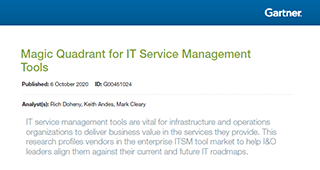Introduction
Business Dictionary defines customer support as “Range of services provided to assist customers in making cost effective and correct use of a product,”1 while technical support is “User-friendly assistance for individuals having technical problems with electronic devices.”2
Customer Service and Technical Support both have their roles in organizations. However, there are significant differences between the two. Customer Service focuses on the experience of the customer. Technical support focuses on resolving a technical issue or problem in the fastest, most cost-effective way.
Customer Service and Technical Support Have Different Goals
The primary focus of technical support is to resolve a technical incident or problem. These incidents are either perceived or actual deficiencies with the item they are seeking support for. Because of this, it behooves the technical support representative to determine what is not functioning properly and resolve the issue as quickly as possible while still being friendly and supportive. In most situations, the ultimate measure of success is that the customer doesn’t have to contact support again.
Customer service takes a different approach. Customer service instead focuses on the experience of the customer. This means that customer service can also take a more proactive approach to support and initiate communication with customers. Customer service also doesn’t have to be technical in nature.
Representatives Listen to Customers for Different Purposes
As discussed previously, a technical support representative is focused on resolving your issue as quickly as possible. Good technical support means listening to fix. Technical support reps listen to symptoms, try to reproduce the issue and quickly provide a solution to the issue.
Customer service reps, listen with empathy. They put themselves in the “shoes” of the customer and try to understand what the customer is trying to accomplish. They aren’t listening to fix they are instead listening to recommend. This could be recommending a new product, or different approach.
Representatives Have a Different Perspective on the Product
When discussing the difference in perspective I like to use what I call the “word processing example.” When you contact technical support about an error in your word processor, they can always help you resolve that error dialog box that pops up. They can also help you figure out what plugin isn’t working and remove it. However, when you say, “I’m writing a paper in APA format and I need to know how to make the first page header different than subsequent pages,” technical support will probably come up short.
This is where customer service steps in and can offer distinguishing value. Customer service means knowing what the customer is going through and helping to find a solution. Continuing with our previous example, a good customer service rep would understand what APA format means. They will also know that If someone is asking questions about how to write a paper they are probably on a tight deadline. If they don’t know the answer right away, they know how to get customers in touch with the right resources.
Technical Support is Dead. Long Live Technical Support
You should consider adding customer service practices to existing technical support groups. In the late 90’s and early 2000’s, skilled technologists were more difficult to find. Back then, it was easy for organizations to stand out by providing high quality technical support. Nowadays with the conversion to digital business, technical competency is much more mainstream. Customers want to have great experience with your organization. They are interested in partnerships that go beyond the initial purchase. They want to know that you understand their goals and that you can help them accomplish them. In other words, they want to have a great experience with your organization.
Good Customer Experience = Customer Comfort
At this point you are probably wondering just what customer experience is. Simply put, customer experience is customer comfort. Comfort is a general feeling that the money and time you have invested in a product or service is worth the value received. There are many components that lead to customer comfort. The list below are the ones I try to focus my teams on.
- Empathy – Support representatives need to provide the customer with a sense of understanding. The customer should feel like they are working with a partner who understands the problem from their point of view. Ideally representatives working with customers should have at least a basic understanding of the industry they are supporting.
- Competence – The #1 expectation of any type of support request is that the person providing assistance knows the product inside and out. There is nothing that erodes customer comfort faster than fumbling through a support call. This also means if representatives don’t know the answer to a question, they should admit it. Saying “I don’t have the answer but I can get it for you” will be much better received than pretending that you know an answer when you don’t.
- Friendliness – No one likes to work with a Jerk. Representatives should strive to solve customer challenges in a friendly way without over doing it.
- Communication – This is another extremely important aspect of comfort. At all times representatives should make sure a customer knows four things: What is the cost of support, what work is occurring to address their issue, what will you be working on next, and what is the current ETA for completion of work? As long as customers know those items they will usually be much more comfortable.
- Offer of Assistance – Support representatives should always ask what they can do to help. Don’t ever assume you know what the customer wants. The best way to learn, is to ask.
What to Think About
A 2015 Gartner survey revealed that an overwhelming majority of companies believe that customer experience is the new basis for competition3 Furthermore, according to Salesforce4 “86% of buyers will pay more for a better customer experience.”
While there will always be a need for technical support, IT organizations should evaluate if their support solutions are really meeting the needs of their customers. Are you just supporting a product or are you providing an experience for your customers?
1“http://www.businessdictionary.com/definition/customer-support.html↩
2“http://www.businessdictionary.com/definition/technical-support.html↩
3“https://www.gartner.com/smarterwithgartner/customer-experience-battlefield/↩
4“https://www.pardot.com/blog/9-must-know-stats-customer-centric-marketer/↩







